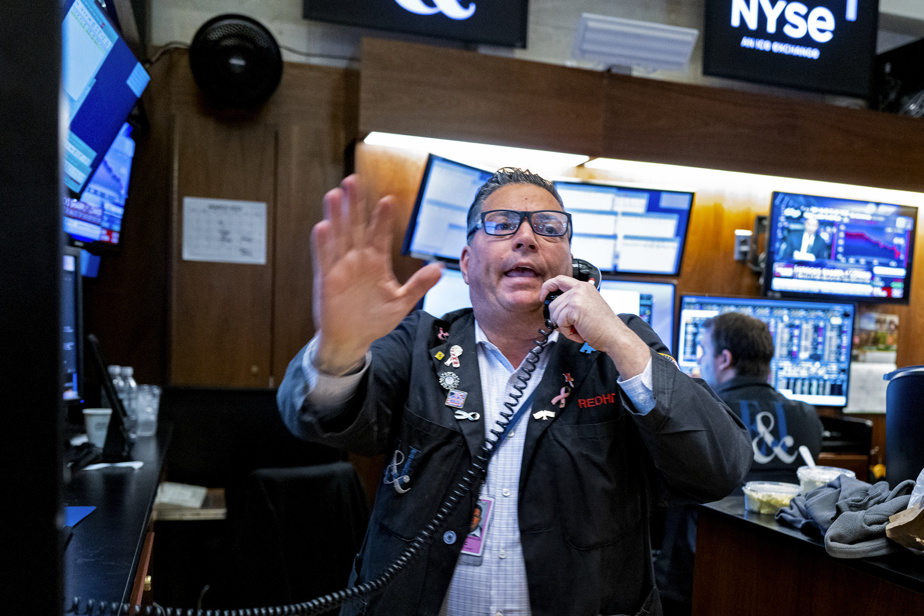(New York) The New York Stock Exchange opened higher on Tuesday, reassured by slowing inflation as well as signs of calm on the bank front, after several days of turbulence.
By 10:20 a.m. EST, the Dow Jones was up 1.13%, the NASDAQ index was up 1.81%, and the broader S
The highly anticipated CPI consumer price index came out up 0.4% month on month in February, as projected by economists.
Over one year, US inflation is at 6%, compared to 6.4% in January. This is the most moderate pace since September 2021.
Some have nevertheless seen some negative elements in this report, in particular the index excluding food and energy (0.5% over one month), higher than expected by economists (0.4%), and its equivalent for services sector, at its highest, over one year (7.3%) since 1982.
“These data support the hypothesis of a quarter-point hike at the next meeting”, of the American central bank (Fed), commented, in a note, Rubeela Farooqi, of High Frequency Economists.
“However, the decision will not only depend on the indicators, but also on concerns about the stability of the financial system, which could lead the Fed not to move next week”, nuanced the economist.
The financial markets have just experienced several days of turbulence, linked to the failure of three banks, including two of the three largest failures in the history of the United States.
But at the start of the day on Tuesday, several lights turned green again, indicating a change in the mood of investors.
The regional or medium-sized banks which had unscrewed on Monday recovered sharply, in the first place First Republic (47.39%), considered to be the new weak link in the chain in recent days.
The movement also carried the bank of Phoenix (Arizona) Western Alliance (40.89%), the Californian PacWest (48.05%) or the asset manager Charles Schwab (9.25%), all heckled on Monday.
“That was the key to the rebound” in the indices, according to Karl Haeling of LBBW. “There was no new development, but people realized that it was not certain that all these regional banks would implode. »
Another positive element was the jump in bond yields, which had just experienced their worst three-day correction since Black Monday in 1987.
The yield on 10-year US government bonds stood at 3.65%, compared to 3.57% on Monday at the close.
Clearly more closely followed than the 10-year, because it is more representative of operators’ expectations in terms of monetary policy, the 2-year rate took off at 4.31%, against 3.97% on Monday.
Equity markets often react badly to tight bond yields, but in this case the move “comforted them, because if yields had continued to dip, it would have looked like the crisis was getting worse,” he said. Karl Haeling.
“Bonds had gone up too much and bank stocks had fallen too much, too quickly,” Patrick O’Hare of Briefing.com summed up in a note. “This realization paved the way for a bargain hunt. »
Elsewhere on the stock market, United Airlines was penalized (-5.53%) after revealing it expects a first quarter loss, which would be the result of a new collective agreement for pilots, although an agreement has not yet was found with the Air Line Pilots Association union.
Uber (6.57%) and Lyft (5.91%) pranced in the wake of Monday’s decision by a California court of appeals, which considered that the law on the self-employed status of VTC drivers ( passenger vehicles with drivers) was not contrary to the California Constitution.
